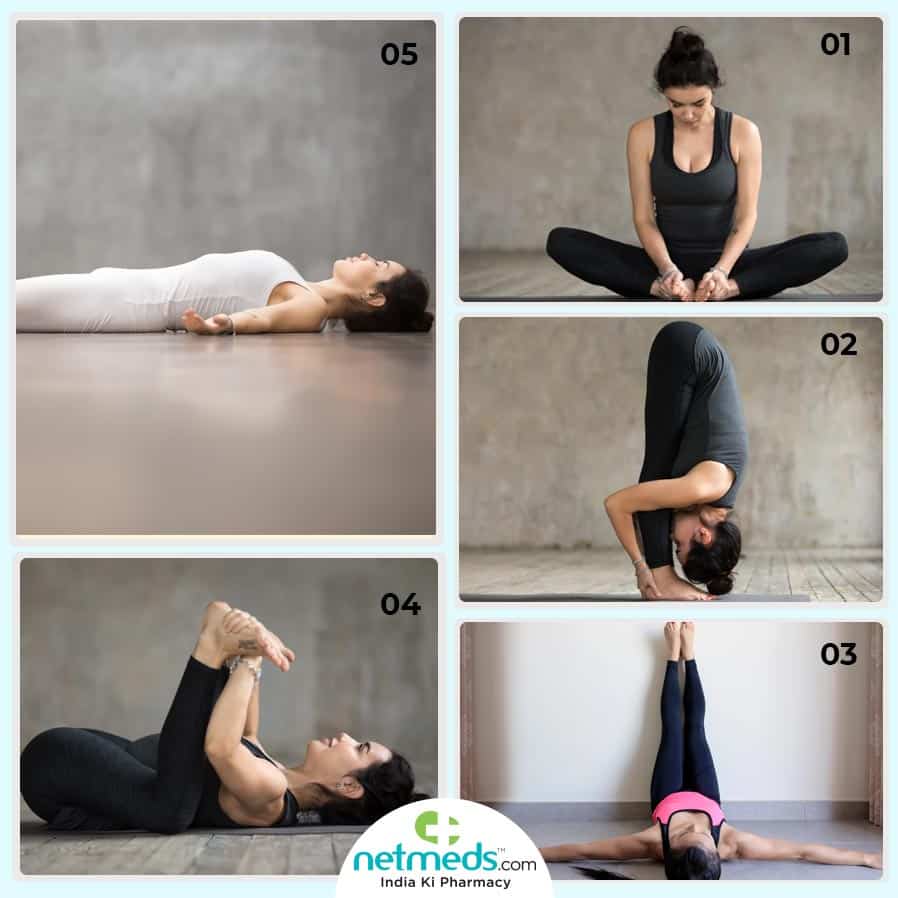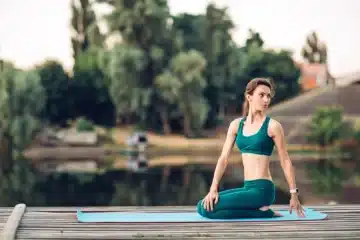Improve your sleep and find relief from insomnia with these effective yoga poses. Yoga is a powerful tool for improving sleep quality and finding relief from insomnia.
By incorporating specific yoga poses into your daily routine, you can relax your body and mind, reduce stress and anxiety, and promote better sleep. The practice of yoga can help to calm the nervous system, quiet the mind, and prepare the body for a restful night’s sleep.
In this guide, we will explore a variety of yoga poses that are known for their sleep-inducing benefits, and provide step-by-step instructions for incorporating them into your bedtime routine. Whether you’re a seasoned yogi or a beginner, these simple yet effective poses can help you improve your sleep quality and find relief from insomnia.
The Importance Of Quality Sleep
Quality sleep is paramount to our overall well-being. It directly impacts our physical, mental, and emotional health, making it essential for optimal functioning in our daily lives. Many factors can hinder the quality of our sleep, including stress, anxiety, and poor sleeping habits. However, incorporating yoga into your routine can greatly improve sleep quality and provide relief from insomnia.
The Impact Of Sleep Deprivation
Sleep deprivation can lead to a wide range of health issues such as weakened immune system, increased risk of chronic diseases, and cognitive impairment. It can also affect mood, memory, and decision-making abilities, ultimately diminishing one’s quality of life.
Understanding Insomnia
Insomnia is a common sleep disorder characterized by difficulty falling asleep, staying asleep, or waking up too early. The underlying causes of insomnia can be complex, including stress, anxiety, depression, and certain medical conditions. Fortunately, yoga offers a natural and effective approach to addressing insomnia and promoting restful sleep.
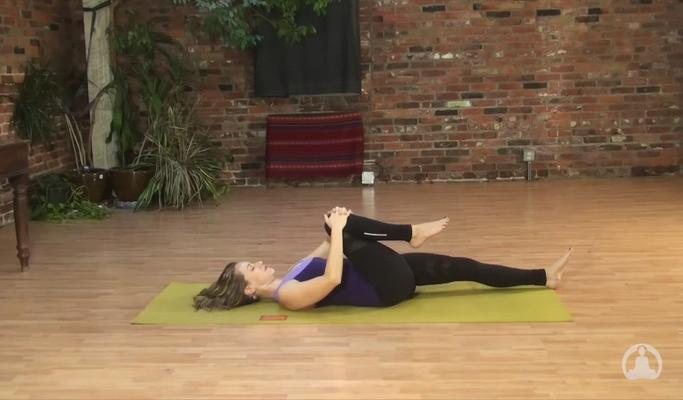
Credit: www.doyogawithme.com
How Yoga Can Help Improve Sleep
Yoga is not only a physical practice but also a powerful tool to improve sleep quality and provide relief from insomnia. The deep connection between yoga and sleep has been well-established, with numerous studies showing the positive impact of yoga on sleep patterns. By incorporating specific yoga poses and breathing techniques into your routine, you can experience better sleep and find relief from insomnia.
The Connection Between Yoga And Sleep
Yoga helps improve sleep by promoting relaxation and reducing stress and anxiety levels. The calming and mindful nature of yoga induces a state of relaxation that can ease the transition into a restful night’s sleep.
Reducing Stress And Anxiety
Yoga practice incorporates breathing exercises and meditation, which can significantly reduce stress and anxiety. By calming the mind and releasing tension from the body, yoga helps to create a conducive environment for better sleep.
Promoting Relaxation And Mindfulness
Engaging in yoga encourages a sense of mindfulness and relaxation, leading to decreased arousal and improved sleep quality. The focus on deep breathing and mindful movements during yoga can help in regulating the body’s stress response, ultimately aiding in achieving better sleep.
Yoga Poses For Better Sleep
If you struggle with sleepless nights and are searching for a natural way to catch those much-needed Z’s, look no further than yoga. Integrating certain poses into your bedtime routine can help promote better sleep and provide relief from insomnia. Let’s explore three effective yoga poses that can pave the way for a restful night’s sleep.
Child’s Pose (balasana)
Child’s Pose, also known as Balasana, is a gentle stretch that releases tension in the lower back and hips, while calming the mind and promoting relaxation. To perform this pose:
- Kneel on the floor, sitting on your heels, with your big toes touching.
- Lower your torso forward and rest your forehead on the mat, extending your arms in front of you.
- Breathe deeply and allow your body to relax, sinking deeper into the pose with each exhalation.
- Hold this position for 1-3 minutes, focusing on your breath and letting go of any mental or physical tension.
Child’s Pose is a wonderful way to prepare your body and mind for a good night’s sleep.
Legs-up-the-wall Pose (viparita Karani)
Viparita Karani, also known as Legs-Up-The-Wall Pose, is a simple yet powerful restorative pose that brings a sense of calmness to the body and mind. This pose helps improve blood circulation, relieve lower back pain, and reduces stress and anxiety. To practice this pose:
- Lie on your back and position your hips close to a wall.
- Extend your legs up against the wall, allowing your heels to lightly rest on it.
- Place your arms alongside your body, palms facing up.
- Close your eyes and focus on your breath, feeling the gentle stretch in the back of your legs.
- Remain in this position for 5-10 minutes, allowing yourself to fully relax and unwind.
Legs-Up-The-Wall Pose is an excellent way to wind down before bed and prepare your body for a peaceful slumber.
Corpse Pose (savasana)
Savasana, also known as Corpse Pose, is the ultimate pose for deep relaxation and inner calm. It helps reduce stress, anxiety, and insomnia by promoting a state of complete rest. To enter this pose:
- Lie flat on your back, keeping your legs slightly apart and your arms relaxed at your sides, palms facing up.
- Close your eyes and focus on your breath, inhaling and exhaling deeply.
- Consciously relax each part of your body, starting from your toes and working your way up to your head.
- Stay in this position for 10-15 minutes, allowing yourself to fully surrender and let go of any tensions or worries.
Corpse Pose is the ideal way to conclude your bedtime yoga routine, enabling you to drift off into a peaceful and rejuvenating sleep.
By incorporating these three yoga poses into your nightly routine, you can improve your sleep quality and experience relief from insomnia. Remember, consistency is key—practice these poses regularly to fully reap their benefits. Sweet dreams!
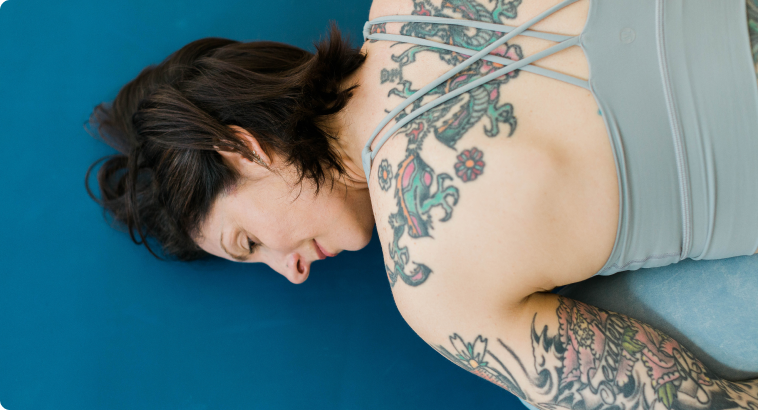
Credit: yogaworks.com
Breathing Techniques For Insomnia Relief
If you struggle with insomnia or have difficulty falling asleep, incorporating specific breathing techniques into your yoga practice can help promote better sleep and provide relief from insomnia. These techniques, such as Alternate Nostril Breathing (Nadi Shodhana), 4-7-8 Breathing Technique, and Bee Breath (Bhramari Pranayama), can help calm the mind, reduce stress, and prepare your body for a restful night’s sleep.
Alternate Nostril Breathing (nadi Shodhana)
One effective breathing technique for insomnia relief is Alternate Nostril Breathing, also known as Nadi Shodhana. This technique involves breathing through one nostril at a time, alternating between them. Here’s how to practice it:
- Sit comfortably in a quiet and peaceful space, ensuring your spine is straight.
- Place your left hand on your left knee, palm facing upwards, or adopt a chin mudra by gently touching your thumb and index finger together.
- Use your right hand to close your right nostril with your thumb.
- Inhale deeply through your left nostril, counting to four.
- Close your left nostril with your ring finger, releasing your thumb from the right nostril, and exhale through the right nostril, counting to four.
- Inhale through the right nostril for a count of four, then close it with the thumb.
- Release the ring finger and exhale through the left nostril, counting to four.
- Repeat this cycle for several minutes, focusing on the breath and the sensation of air moving through each nostril.
4-7-8 Breathing Technique
The 4-7-8 Breathing Technique is a simple yet powerful method to calm your nervous system and promote relaxation. Here’s how to practice it:
- Begin by finding a comfortable seated position and relaxing your body.
- Gently close your eyes and take a deep breath in through your nose, counting to four.
- Hold your breath for a count of seven.
- Exhale slowly through your mouth, making a whooshing sound, counting to eight.
- Repeat this cycle three more times for a total of four breaths.
Bee Breath (bhramari Pranayama)
Bee Breath, or Bhramari Pranayama, is a breathing technique that mimics the soothing sound of a buzzing bee. It can help calm the mind, relieve stress, and promote better sleep. Here’s how to practice it:
- Find a comfortable seated position, ensuring your spine is straight.
- Close your eyes and take a deep breath in through your nose.
- Exhale slowly, creating a humming sound like that of a buzzing bee.
- As you exhale, gently press your index fingers against your tragus (the small cartilage in front of your ear canal) to partially close your ears, allowing you to hear the buzzing sound more clearly.
- Continue to exhale and hum for as long as your breath comfortably allows.
- Repeat this practice for several minutes, focusing on the sensation of the buzzing sound.
Creating A Bedtime Yoga Routine
Having trouble falling asleep at night? Incorporating a bedtime yoga routine into your evening ritual can be just the solution you need. Not only does yoga help relax the body and mind, but it also promotes better sleep and relieves insomnia. In this blog post, we will explore how to create an effective bedtime yoga routine that will have you drifting off into dreamland in no time.
Setting The Right Environment
Creating a relaxing environment is essential for a successful bedtime yoga routine. Follow these tips to set the perfect stage for a peaceful night’s sleep:
- Keep your bedroom clean and clutter-free to minimize distractions.
- Dim the lights or use dimmers to create a calming atmosphere.
- Play soft, soothing music or use a sound machine to drown out any external noise.
- Use essential oils, such as lavender or chamomile, to promote relaxation.
- Ensure your mattress and pillows are comfortable and supportive.
Sequence And Duration
The sequence and duration of your bedtime yoga routine play a crucial role in preparing your body and mind for sleep. Follow these guidelines:
- Start with gentle warm-up poses to loosen any tension in the body.
- Transition into slower-paced poses that focus on stretching and releasing stress.
- Incorporate restorative poses that relax the body and calm the mind.
- End your routine with deep breathing exercises or guided relaxation.
- Aim for a duration of 15-30 minutes to avoid overstimulating the body before bed.
Incorporating Meditation
Meditation is a powerful tool for quieting the mind and promoting relaxation. Adding a short meditation practice to your bedtime yoga routine can enhance its effectiveness. Here’s how:
- Find a comfortable seated position and close your eyes.
- Focus on your breath, allowing it to become slow and steady.
- Observe any thoughts or sensations without judgment, letting them pass by.
- Visualize yourself in a peaceful and serene setting, such as a beach or forest.
- Continue for 5-10 minutes or as long as feels comfortable.
By incorporating meditation into your bedtime yoga routine, you can achieve a state of deep relaxation, readying yourself for a restful night’s sleep.
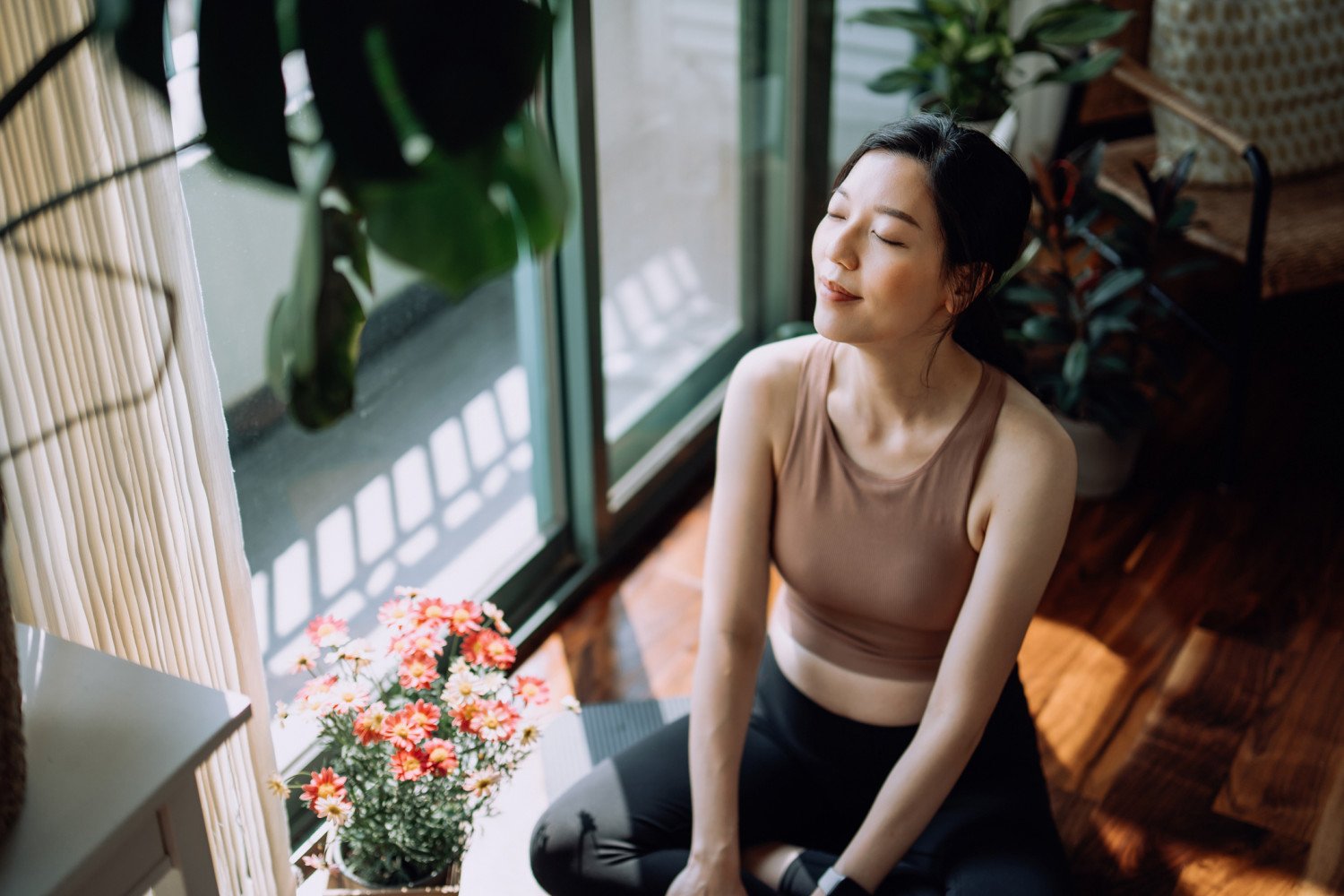
Credit: www.calm.com
Frequently Asked Questions For Yoga For Better Sleep And Insomnia Relief Poses
Which Pose In Yoga Helps People With Insomnia?
The Corpse Pose is a yoga pose that can help people with insomnia. It promotes relaxation and reduces stress, allowing for better sleep.
Which Yoga Is Best For Night Sleep?
The best yoga for night sleep is restorative yoga, which includes gentle poses and deep breathing to relax the body and mind, promoting better sleep.
What Is The Asana Pose For Sleeping?
The asana pose for sleeping is Savasana. Lie flat on your back with arms at your sides, palms facing up, and legs extended. Relax and breathe deeply. This pose helps calm the mind and body for a peaceful sleep.
Can Yoga Cure Chronic Insomnia?
Yes, yoga can help alleviate chronic insomnia by promoting relaxation and reducing stress. Regular practice of yoga can improve sleep patterns and quality, contributing to better sleep overall.
Conclusion
Incorporating yoga into your daily routine can have significant positive effects on your sleep quality and help relieve insomnia. By practicing specific poses such as the legs-up-the-wall pose or child’s pose, you can relax both your mind and body, promoting a deep and restful sleep.
Don’t let sleepless nights hold you back; try these yoga poses and experience the transformative benefits for yourself. Wake up refreshed and rejuvenated, ready to conquer the day.
